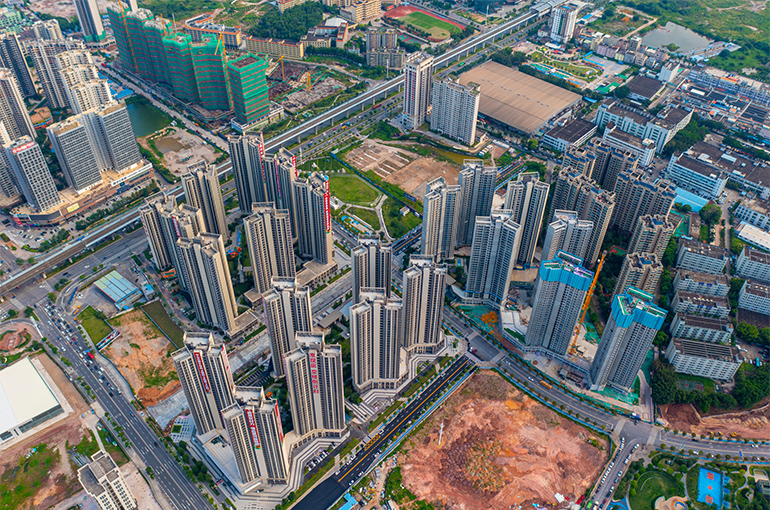 China's Top Builders Spent 40% Less on Land in First Half
China's Top Builders Spent 40% Less on Land in First Half(Yicai) July 4 -- China's top 100 developers spending on purchasing land fell 40 percent in the first six months from a year earlier, with builders still facing a drop in sales, investment, and financing despite the country issuing real estate market supporting policies.
The developers spent CNY420.4 billion (USD57.8 billion) buying land in the six months ended June 30, according to the latest data released by the China Residence Information Circle's research center.
Only 30 of the top 100 builders bought land in the first half, with 12 spending more than CNY10 billion (USD1.4 billion) and five over CNY20 billion, compared with 15 and nine a year ago, respectively.
From the supply and demand side, if the decline in developers' land purchases continues, there may be fewer new homes in the future, Guan Rongxue, senior analyst at the Zhuge Data Research Center, told Yicai. The real estate market faces a supply glut, so less supply will drive the market back to balance, Guan added.
Developers remain conservative towards the future market, with the top 10 firms by sales spending less on land in the first half. Top builder Poly Developments and Holdings Group spent CNY11.6 billion, down 70 percent, China Overseas Land and Investment spent CNY11.2 billion, down 73 percent, and China Vanke spent the least among the top 10 at just CNY2.9 billion (USD398.9 million), down 94 percent.
However, some developers took advantage of the real estate market. CSCEC Yipin, Lianfa Group, and many other state-owned firms spent more on land in the first half this year than a year earlier, with most of their purchases in first- and second-tier cities, the CRIC noted.
Developers prefer first- and second-tier cities due to market uncertainties. Beijing ranked first in land transfers with CNY78.4 billion in the first half, or about 14 percent of the total in China, followed by Hangzhou with CNY66.1 billion and Shanghai with CNY44.1 billion.
Land prices are robust in first- and second-tier cities. The per-floor area cost in first-tier cities jumped over 15 percent in the first half of this year from the second half of last year and rose 7.7 percent from a year earlier. That in second-tier cities climbed 5.4 percent from the second half of last year, while that in third- and fourth-tier cities dropped about 20 percent from the second half of last year and from a year ago.
Editor: Martin Kadiev